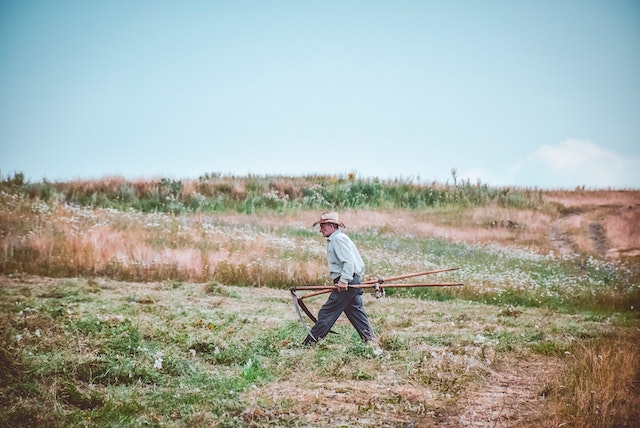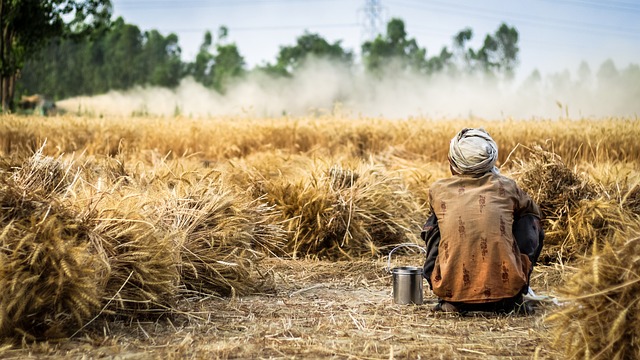Primitive subsistence farming is the oldest form of agriculture. It was still prevalent in some parts of the world. From the preventive collection, some people have taken a step up on the economic scale by learning the art of domesticating plants. Their economy has evolved into a primitive culture.
Farmers in this style of agriculture solely raise food for themselves and their families, making it self-sufficient. Small surpluses can sometimes be traded or sold for money.
With the aid of primitive instruments like Dao, hoe, digging sticks, and family or community labor, primitive subsistence agriculture includes shifting cultivation and nomadic herding.
Primitive subsistence farming is practiced on small patches of land. In this type of farming, farmers depend on the monsoons and the soil’s natural fertility.
What Is Primitive Subsistence Farming?
Primitive subsistence farming entails growing enough grains, fruits, and vegetables as well as keeping enough dairy cows or goats to feed your own family and earn just enough money to cover the cost of one pair of shoes and one piece of clothing per person each year.
Third-world nations have primitive subsistence farmers or less. This farming system is done on a small patch of land with simple tools. Mainly family members are the workers and they can produce enough for their own families.
This farming system is self-sufficient, with farmers producing simply enough food for themselves and their families.
As a result, the economy is stagnant and has limited room for improvement. Nowadays, farmers have a high degree of rural independence as they are not confident about landlords or trading centers.

Characteristics:
- In primitive subsistence farming methods, lands are usually cleared by fire. Ashes add to soil fertility. And where trees are not burned, they are cut by men to decompose naturally.
- Primitive subsistence farming is also known as Slush & Burn agriculture.
- To make this type of culture, farmers usually used very primitive tools such as sticks and hoes, without the aid of machines or even dried animals.
- To sustain their families, farmers produce food crops and cereals by clearing a patch of land.
- Farmers clear and shift the land for cultivation when the soil fertility reduces.
- Primitive subsistence farming allows the soil to replenish itself through natural processes.
- In primitive subsistence farming, the productivity of land is low as the farmers do not utilize modern farming inputs or fertilizers.
What Are The Factors Affecting Primitive Subsistence Farming?
- Primitive subsistence agriculture is practiced on small patches of land with the help of primitive tools like hoe, Dao, digging sticks, and family, or community labor.
- This type of farming depends upon monsoons, the natural fertility of the soil, and the suitability of other environmental conditions for the crops grown.
- To sustain their families, farmers clear a patch of land and produce cereals and other food crops.
- When the soil fertility reduces, the farmers shift and clear a fresh patch of land for cultivation.
How Many Types Of Primitive Subsistence Farming Are There?
Shifting cultivation and nomadic herding are both aspects of primitive subsistence agriculture. In the heavily wooded regions of the Amazon basin, tropical Africa, some of southeast Asia, and northeast India, shifting cultivation is practiced.
What Crops Are Grown In A Primitive Subsistence System?
Some of the crops grown through primitive subsistence agriculture are rice, maize, millet, bananas, and cassava.
Advantages:
- It costs less Little capital is required. The farmers do not pay for the land or many of the farming tools.
- No Labor Hiring These farms employ their family for the labor involved. Crop production does not employ any outside labor.
- A Continuum of Employment Because of the simple tools in use, anyone can learn the approaches very fast. Almost anyone may learn the skill without any formal training.
- Family’s Source of Food Supply Being able to feed your family while residing in such remote regions is the biggest benefit.
- Avoid Using Monocultures The planting of various crop varieties together preserves the biodiversity of the land.
What Is The Drawback Of Primitive Subsistence Agriculture?
- Limited Crop Types Only a certain number of crop species are available to farmers.
- Subject Rainfall Irrigation is not an option due to the geography and the fact that the majority of farmers that utilize this method are very underprivileged.
- Limits on Farm Size Since all work is done by hand and farms are kept relatively small, they can be managed effectively.
- Typically Only Produces Enough Produce The farms are unable to maximize productivity due to a shortage of resources like fertilizers and a lack of automation technology.
- Low Yields Small yields for the farmer are caused by a low production level and a lack of fertilizers to maximize crop development.l
- Contributes to Deforestation To create the agriculture that is available, areas are cleared and burned. Farmers should go to the next open area as soon as the soil is no longer productive and clear and burn the vegetation there.
What Is Primal Subsistence Farming Called In Different Regions Of India?
Different regions of India call primitive subsistence farming by different names–
- “Jhumming” in the northeastern states of Assam, Meghalaya, Mizoram, Nagaland, Pamlou district of Manipur, and in the Andaman and Nicobar Islands.
- “Podu” or “Penda” in Andhra Pradesh.
- “Pama Dabi” or “Koman” or “Bringa” in Orissa.
- “Kumari” in the Western Ghats.
- “Valre” in South-Eastern Rajasthan.
- “Kuruwa” in Jharkhand.
- “Khil” in the Himalayan region.
Where Is The Primitive Subsistence Farming System Practiced?
Shifting cultivation and nomadic herding are both aspects of primitive subsistence agriculture. In the heavily wooded regions of the Amazon basin, tropical Africa, some of southeast Asia, and northeast India, shifting cultivation is practiced. These are the regions with frequent rainfall and rapid vegetation regrowth.
Final Word:
Primitive subsistence farming is the original method we used to gather crops. With all the advances made in agriculture, it is also one of the least efficient methods today. Very few places still use this as a primary way to produce crops for their country. The farmers do not use any chemicals, fertilizers, pesticides, or technology.
You would just plant food for yourself and your family in subsistence farming. However, a modest surplus of crops may occasionally be sold to generate additional revenue.
